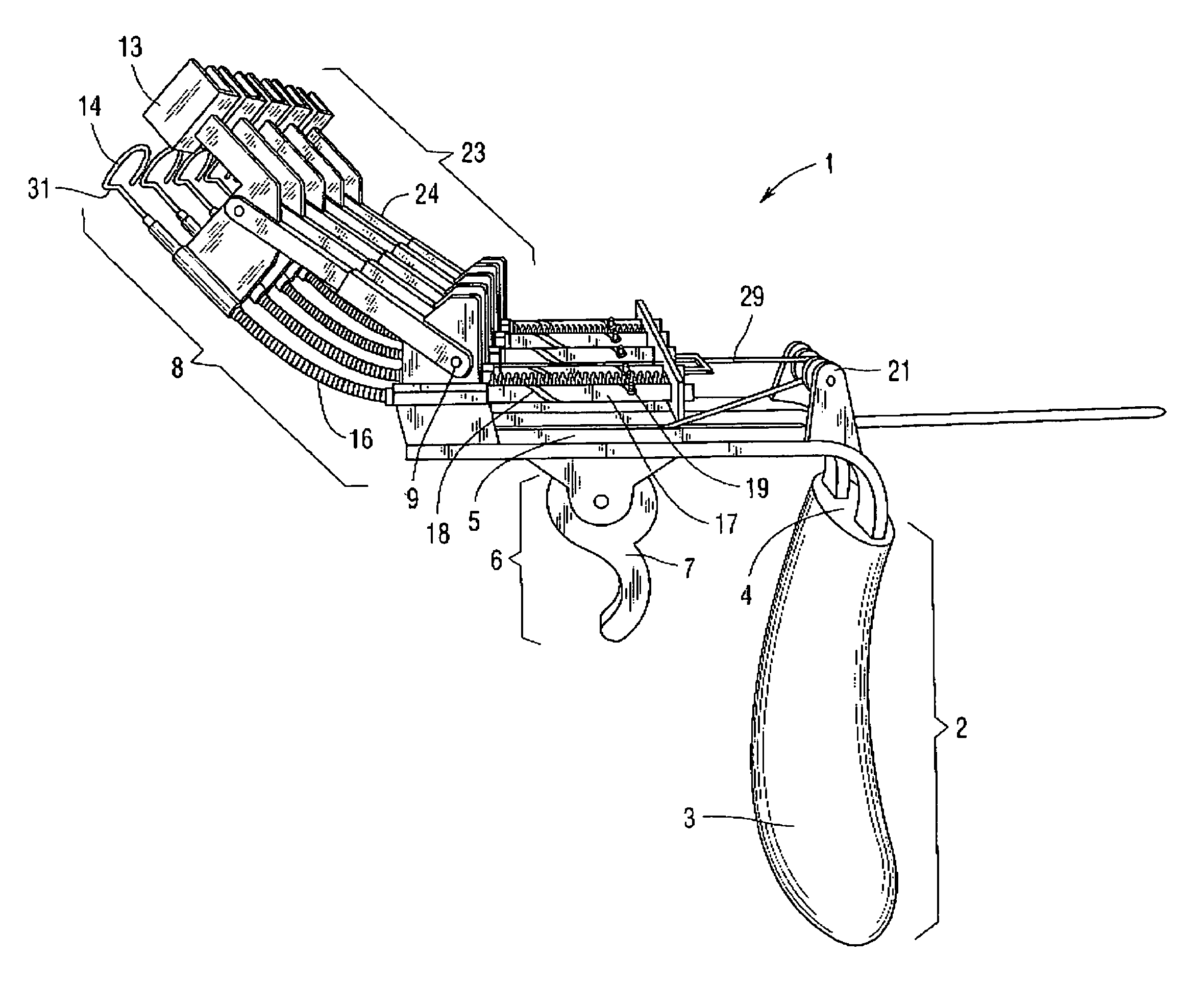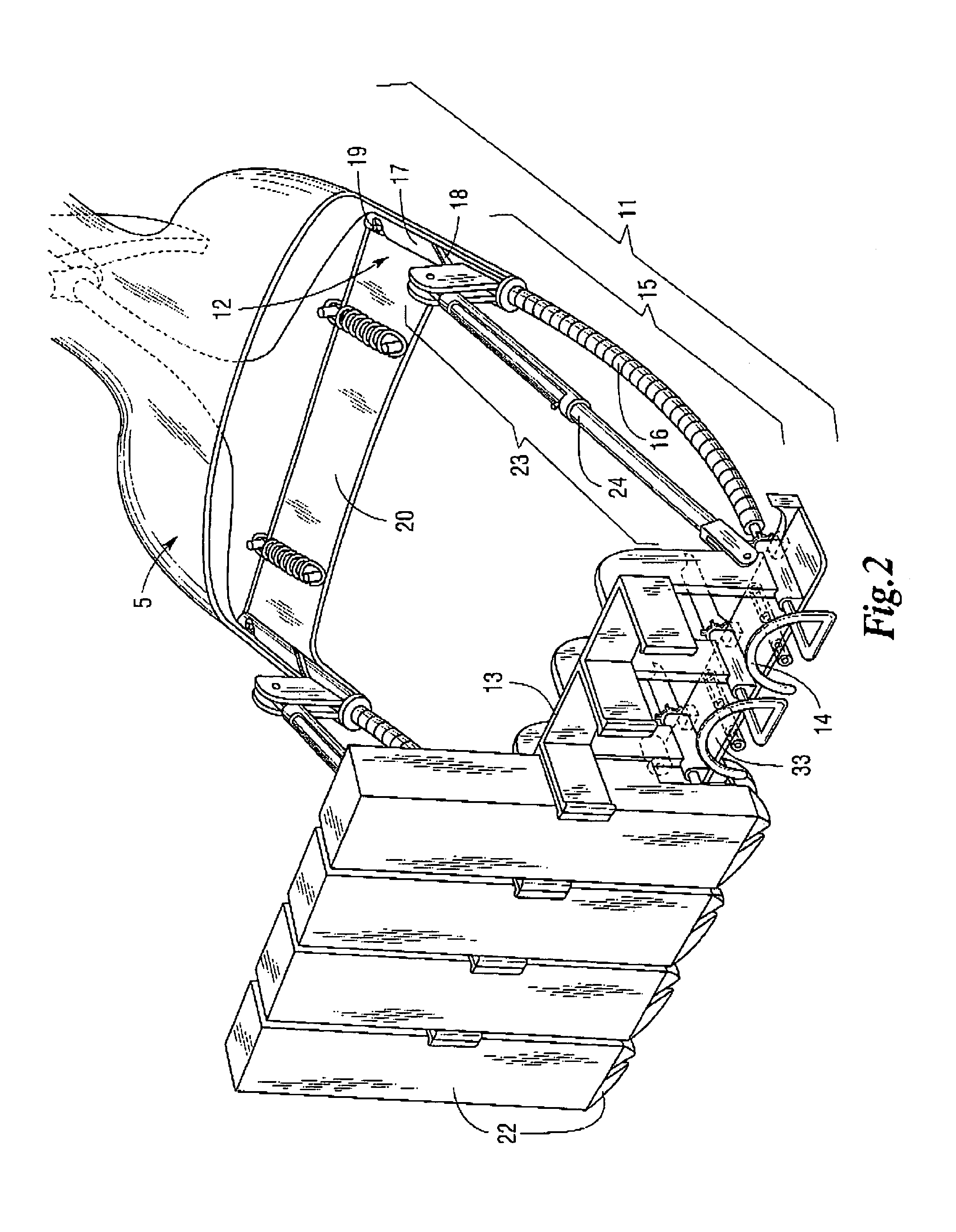Hair color variegation device
a hair color and variegation technology, applied in the field of human hair color, can solve the problems of inability to effectively color hair roots, unpredictable and sometimes very undesirable end results, and difficulty in attracting hair color technicians, and achieve the effect of quick, accurate, predictably, and safe application of hair color to selected strands of hair
- Summary
- Abstract
- Description
- Claims
- Application Information
AI Technical Summary
Benefits of technology
Problems solved by technology
Method used
Image
Examples
Embodiment Construction
[0033]The present invention is a trigger-operated, hand-held device that is used to selectively entrain and color human hair. The invention solves separate and distinct needs of professional hair stylists and individuals desiring the artificial coloring of their hair.
[0034]Each of the figures illustrates embodiments of the hair coloring device 1. As shown in FIG. 1, the device 1 includes a handle 2, having a first end 3, configured to be gripped by a user, and a second end 4 adapted to connect to a chassis 5. The handle 2 is preferably four and one-half (4½) inches (10.5 cm) in length, but may be made in various lengths. The handle 2 can be glued, frictionally fitted, or bonded to the chassis 5, as shown in FIG. 1. The chassis 5 is preferably five (5) inches (12.5 cm) in length, but may be made in various lengths. The handle 2 and chassis 5 of the device 1 may be made from a variety of materials (e.g., plastic, wood) depending on design considerations.
[0035]As shown in FIG. 1, a tri...
PUM
 Login to View More
Login to View More Abstract
Description
Claims
Application Information
 Login to View More
Login to View More - R&D
- Intellectual Property
- Life Sciences
- Materials
- Tech Scout
- Unparalleled Data Quality
- Higher Quality Content
- 60% Fewer Hallucinations
Browse by: Latest US Patents, China's latest patents, Technical Efficacy Thesaurus, Application Domain, Technology Topic, Popular Technical Reports.
© 2025 PatSnap. All rights reserved.Legal|Privacy policy|Modern Slavery Act Transparency Statement|Sitemap|About US| Contact US: help@patsnap.com



